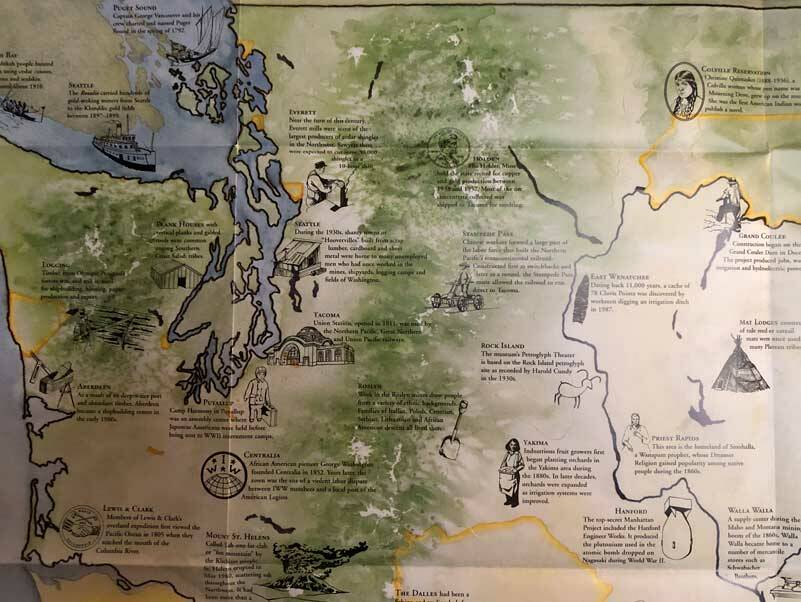By Morf Morford, Tacoma Daily Index
A running joke among those of us who grew up around here is how much new-comers mangle local place names. From Yakima to Puyallup to Sequim to Queets and a hundred more, Washington state regional names can be a puzzle and frustration – and if you are a public figure (like a TV weather presenter), a continuing embarrassment and perpetual nightmare.
And it is not just small towns or rivers with names that can baffle visitors. Names like Nespelem, Cayuse, Nootka and Salish can turn up almost anywhere.
Washington state counties
Many of our 39 counties have complicated names that reflect our ever-changing history and many have non-European names. Or at least Americanized versions of Native names.
King County, for example, was named after William Rufus King, vice president under President Franklin Pierce (for whom Pierce County was named). King served as VP for only six weeks before he died in April 1853 (inauguration was held on March 4 in those days). King County’s name was legally changed in honor of Dr. Martin Luther King, Jr. in 2005.
King County is, of course, easy to pronounce.
That is not the case of Pend Oreille County, which easily wins the prize as the most commonly mispronounced county name in Washington state. Originally French and spelled as Pend d’Oreille, meaning something like “hangs on the ear,” believed to be descriptive of ornamentation worn by Indigenous people in that area in the 19th century. Locals pronounce it something like “Ponderay” not “penned (or pond) oriole”.
Second place in the most mangled county name contest would have to be Wahkiakum. Besides being a not-yet-used (but great) name for a band, it’s a descriptive name for a county not many from the wet side of the mountains have seen.
If you look at a map, at the southeast corner of the state on the Snake River, directly across from Idaho, you can see Asotin County. The name comes from the Native Nez Perce term “heesutin,” which translates to “Eel Creek.” The county seat is also named Asotin, formerly known as Asotin City. It’s here where the creek once known for its eels joins the Snake River.
Chelan is easy to pronounce. The word means something like “deep water” – which certainly applies to Lake Chelan. The county seat of Chelan County is Wenatchee, which is also a Native word that was applied to the river that enters the Columbia River in the town. Wenatchee first appears in print courtesy of the journals of the Corps of Discovery’s Meriwether Lewis and William Clark who used it to describe the Indigenous people and the river – though the two captains spelled it “Wahnaachee.”
In the opposite corner of the state (northwest or upper left) you’ll see Clallam County. If you go there you’ll notice a variety of spellings from Clallam to S’Klallam, which makes sense since the original transliteration was something like “Do-skal-ob”. The county seat of S’Klallam is Port Angeles – which in 1791 was given the Spanish name “Porto de Nuestra Senora de los Angeles” – or, in English, “Port of Our Lady of the Angels,” for the Virgin Mary.
You might notice a vague similarity between the names of Port Angeles and a certain city in southern California that also has a long Spanish name with a distinct religious flavor – Porto de Nuestra Senora de los Angeles – currently known as Los Angeles. And, like Los Angeles (usually known by its even shorter name – L.A.) Port Angeles is known as P.A. by locals.
In short, about half of Washington State’s county names have Native origins. From Whatcom to Walla Walla to Okanogan and Klickitat, Native names have a permanent place on our maps and landscapes. You can see an interactive map of Washington’s counties here.
But it’s not just us
Exactly half of the US states have names that reflect their Native origins. From Alabama to Arizona to Illinois to Massachusetts to Mississippi, twenty-five states owe their names to Native roots, and in that way at least, pay tribute to those who came before them. You can see an overview of the origins of names of all of the US states here.





